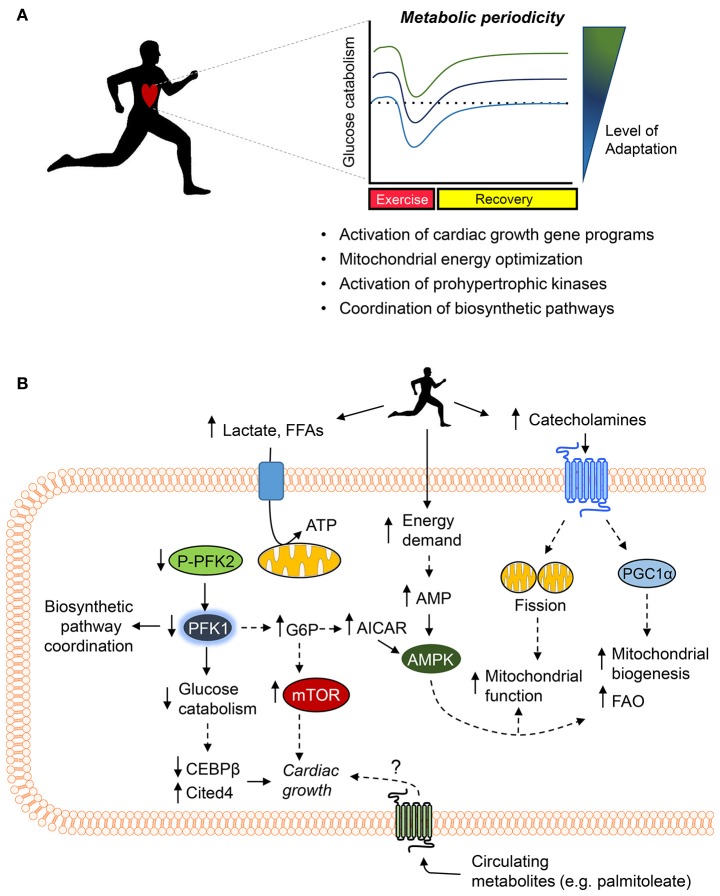Figure 4.
Working model of the metabolic mechanisms of exercise-induced cardiac growth. (A) Periodic changes in glucose metabolism and mitochondrial activity (i.e., metabolic periodicity) occurring with regular exercise promote activation of gene programs responsible for cardiac growth, regulate mitochondrial quality control and function, activate prohypertrophic kinases, and coordinate biosynthetic pathways, all of which integrate to promote cardiac growth. (B) Exercise increases levels of circulating cardiac substrates and catecholamines, which orchestrate changes in cardiomyocyte metabolism. Decreases in the phosphorylation of phosphofructokinase 2 (PFK2) lower phosphofructokinase 1 (PFK1) activity, which decreases glucose catabolism, coordinates ancillary biosynthetic pathways, and increases the levels of upstream glycolytic intermediates (e.g., glucose 6-phosphate, G6P) as well as increases products in the pentose phosphate pathway (e.g., AICAR). Decreases in PFK activity and glucose catabolism appear sufficient to decrease expression of Cebpb and upregulate Cited4, which promote cardiac growth. In addition, elevated levels of G6P, AMP, and AICAR could activate the prohypertrophic signaling kinase mTOR and AMPK. Catecholamine-triggered signaling cascades promote mitochondrial fission and upregulate PGC1α, which acutely increase mitochondrial function and chronically elevate mitochondrial abundance and fatty acid oxidation (FAO) capacity. Last, circulating metabolites (e.g., palmitoleate) may also contribute to exercise-induced physiological cardiac growth.

